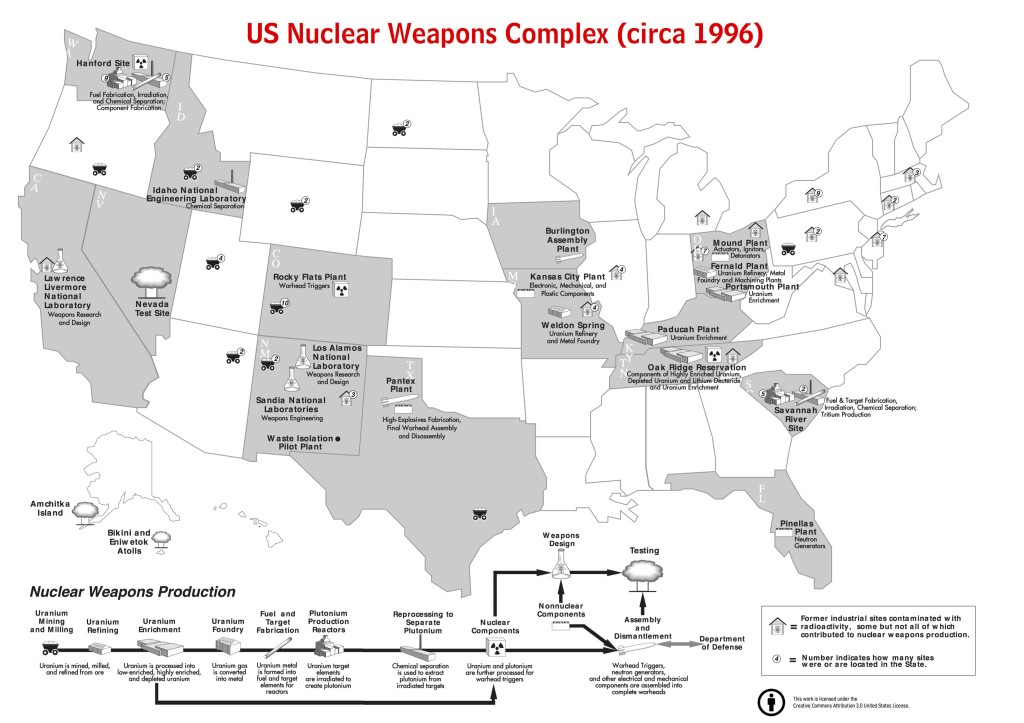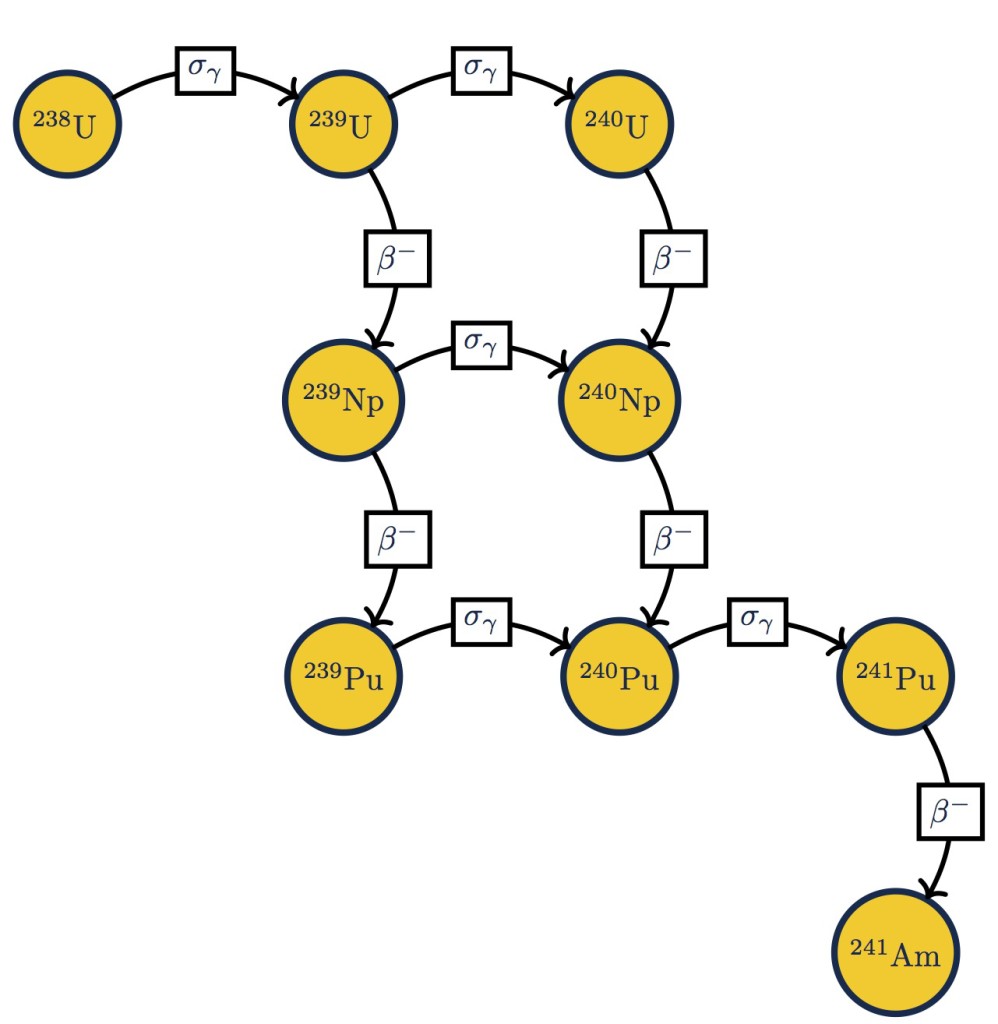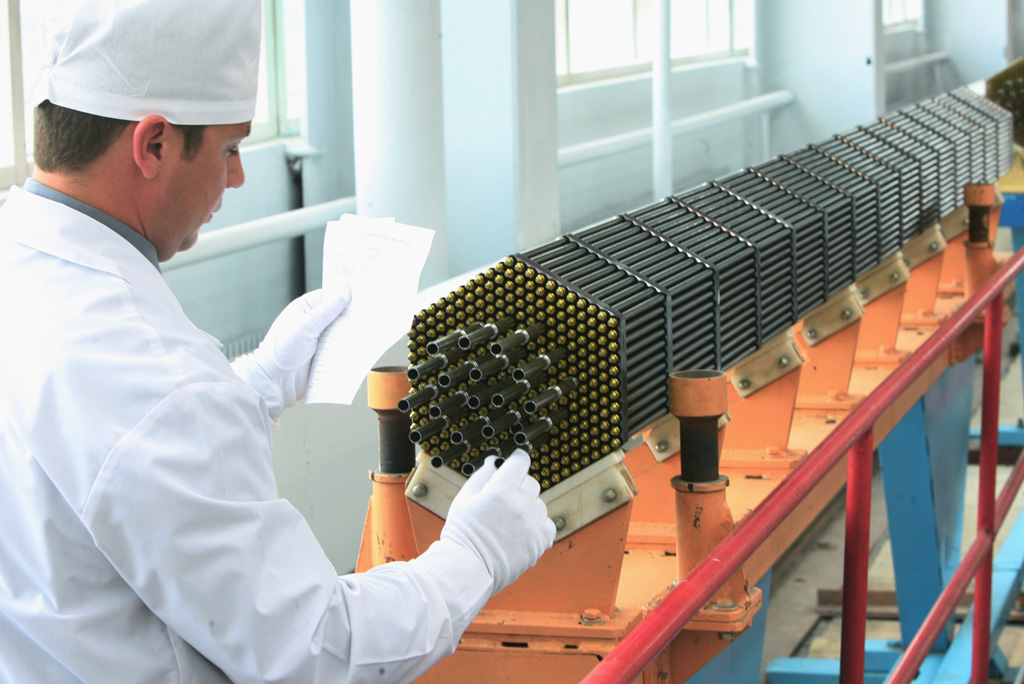The nuclear engineering department is moving buildings this week, and a found a copy of Closing the Circle on Splitting the Atom, a Dept. of Energy report about cleaning up the nuclear waste that was a legacy of the Cold War nuclear weapons program. I’m not sure where I received my copy: probably someone was discarding it in a previous move.
There was an interesting map in the document showing the weapons complex at that time (1996). The problem was that it was poorly separated across two pages and in the electronic version the map does not appear contiguously (it is still split across two pages).
I have corrected this is and changed some of the text so that it is a standalone image. I did not take the time to fix the appalling font kerning, maybe I will do this at some point in the future.
As someone who doesn’t remember the Cold War much (and the millions younger than me) it is hard to imagine the size of the weapons complex during the Cold War. This map only shows the sites are were still active in 1996 and not the many other smaller sites that are only indicated by a single marker in the respective states.
A pdf version of the map is here
A larger jpeg version is here







